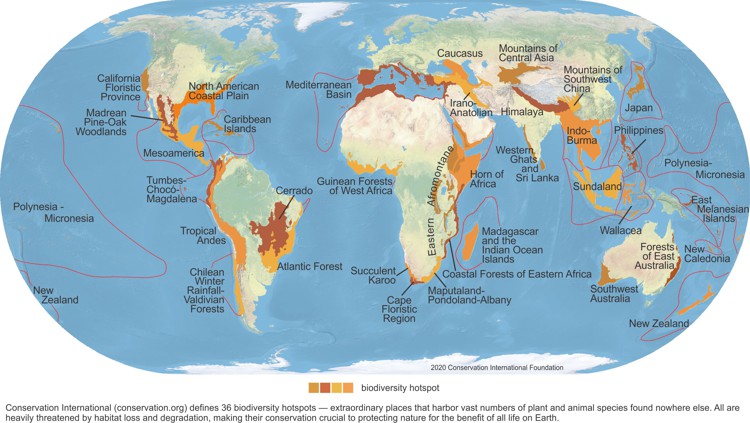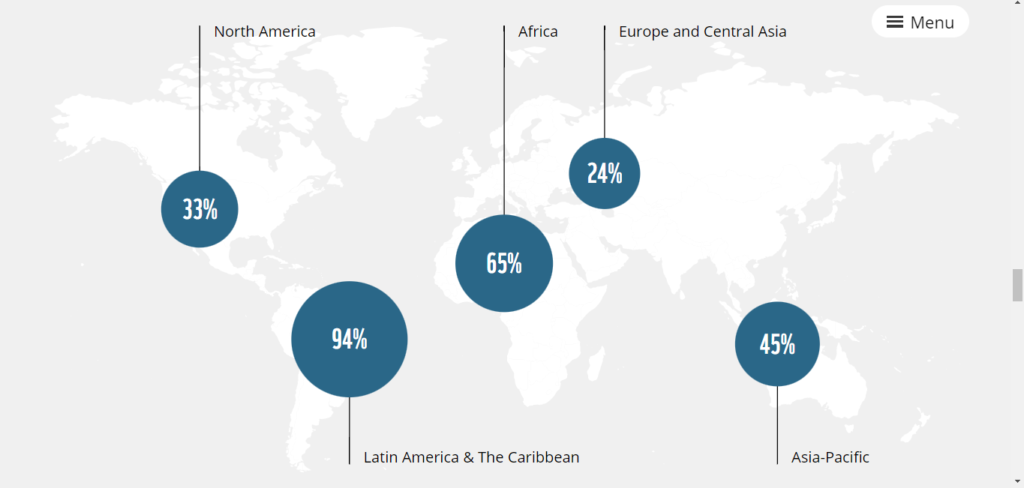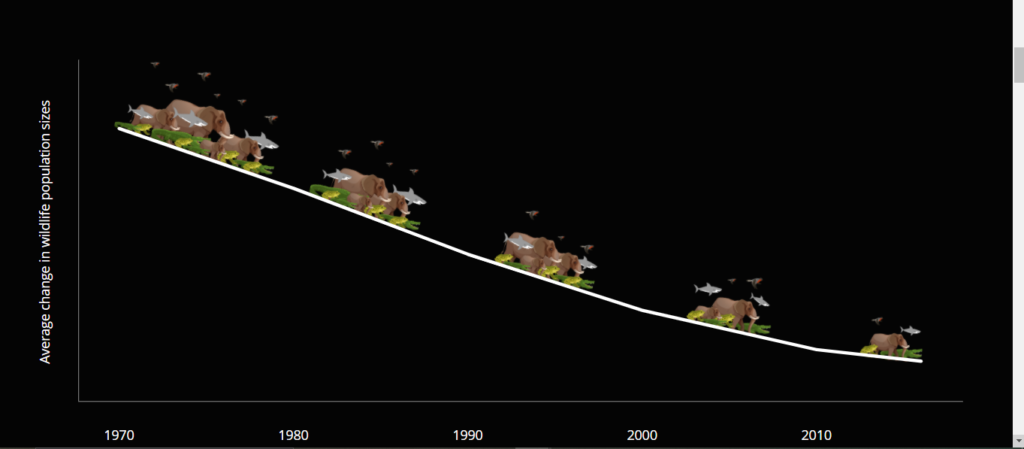What Is Biodiversity?
- Biodiversity refers to the variety of life that may be found in a given place. It includes animals, plants, fungi, and even microbes such as bacteria. Each of these species collaborates in ecosystems to preserve balance and support life.
Biodiversity Hotspots: Biologically Rich and Threatened
Biodiversity hotspots are defined as areas that are both biologically rich (with a diverse range of flora and fauna) and critically threatened, usually by human activities and pollution.
- Biodiversity hotspots make up about only 2.3 percent of Earth’s land surface, but 44 percent of the world’s plants and 35 percent of land vertebrates live in these regions. (Nat Geo: Biodiversity Hotspots, 2019)
- To qualify as a biodiversity hotspot, a region must meet two strict criteria:
- The region must have at least 1,500 indigenous vascular plants and
- The region must have 30% or less of its original natural vegetation. In other words, it must be threatened. (Conservation.org: What are Biodiversity Hotspots)
- One of the world’s most diverse hotspots is the Andes Mountains Tropical Hotspot. Around one-sixth of all plant species in the world live in this region. (Nat Geo: Biodiversity Hotspots, 2019)
- The image below shows the countries and regions that are considered biodiversity hotspots

Biodiversity Loss: An Alarming Problem
Biodiversity has decreased severely over the last several decades. The image below shows the percentage of declining biodiversity by region around the globe.

- North America has lost 33% of its biodiversity, although biodiversity loss has slowed in the 2000s.
- Africa lost an average of 65% of its biodiversity between 1970 and 2016.
- Europe and Central Asia have lost an average of 24% of their biodiversity between 1970 and 2016.
- The Asian Pacific region has declined its biodiversity by an average of 45%. Pollution is one of the main causes of the decline.
- Latin America and the Caribbean have a devastating average of a 94% decline in biodiversity. This is due to a range of factors, including the conversion of grasslands, savannas, forests, and wetlands, the overexploitation of species, climate change, and the introduction of alien species.
- In totality, the population sizes of mammals, birds, fish, amphibians, and reptiles have seen an alarming average drop of 68% since 1970. The biodiversity graph below visualizes the average change in wildlife population sizes over time.

The Economic Impact of Biodiversity
Biodiversity is connected to our economy in multiple ways:
- Around US$44 million of economic value generation, which is more than half of global GDP, depends on natural resources or services (World Economic Forum 2020).
- The industries that depend on nature the most are construction, agriculture, and food and beverages (World Economic Forum 2020).
- More than 70 percent of people living in poverty depend on natural resources to earn a living through activities such as farming, fishing, and forestry (UNEP Global Environment Outlook 2019).